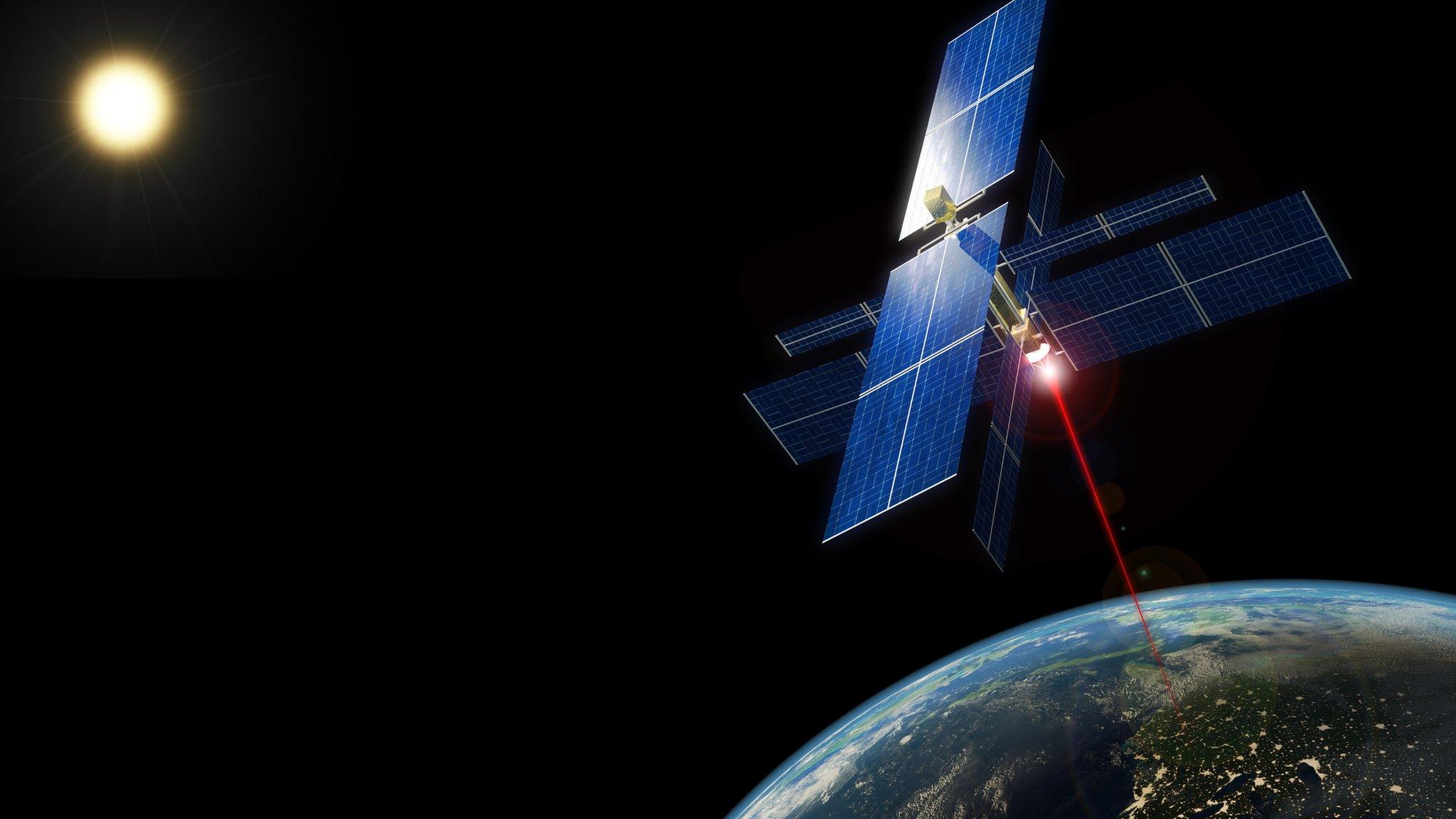Floating solar: Are solar farms on water a good idea?
- Published
- comments
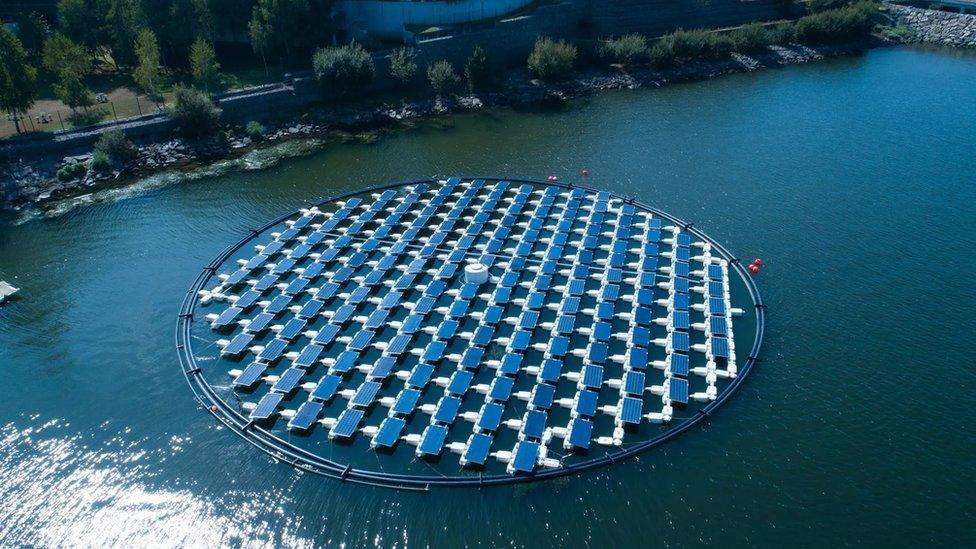
This device of floating panels was built by a company called SolarisFloat and can be found in Oostvoornse Meer, a lake in the south-west Netherlands
With a push towards renewable energy many countries are coming up with new and creative ways to be able to harness the power of solar energy.
Last year solar panels were installed in space, and nations around the world, from the Netherlands to Brazil, have recently been experimenting with the idea of solar farms on water.
Solar farms can take up lots of space on land, that might be better used for other things for example housing, farming and business - or even to grow carbon-absorbing trees.
So could floating solar farms be a good solution?

This solar farm is on an old RAF base in Wroughton, Wiltshire
Conservationists have also expressed concern that land-based solar and wind farms can have a harmful impact on biodiversity, especially those in areas where a lot of plants and animals are living.
For this reason the idea of putting solar panels on areas of unused water sounds like a good potential solution.
Experts say that while the up-front costs of installing the technology on water are are higher than if it were on land - when it comes to the cost of generating energy, it is on a similar level to traditional solar.
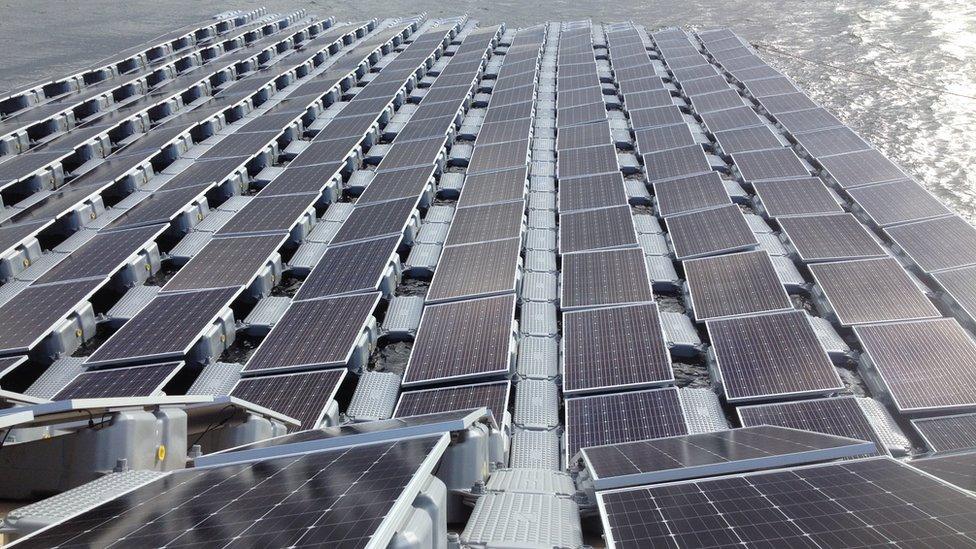
Floating solar panel farms can be hard to build
There is also another benefit of the panels being water-based.
Solar panels generate electricity using rays of light from the Sun - not its heat. In fact when when they get too hot, they don't work as efficiently to produce as much energy.
But the panels on water don't have this problem to the same extent, due to the cooling effect of the water.
Which countries have been using floating solar?
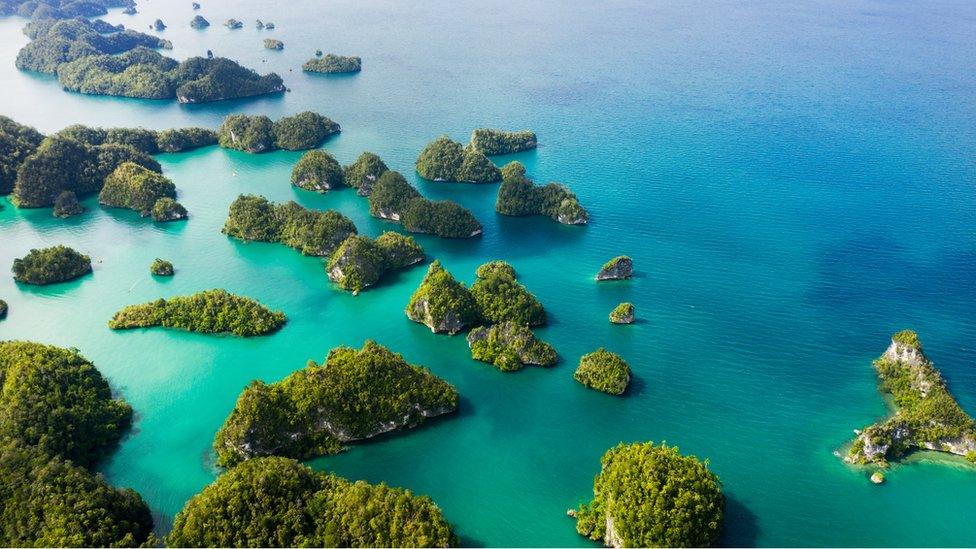
Getting electricity to all of Indonesia's islands has been challenging - so floating solar has been thought of as the best solution
Although more and more countries have been exploring solar, currently less than 1% of the world's solar installations are floating.
Countries such as Japan and Singapore have been investing heavily in floating solar farms because they have a limited amount of land available for solar farms or it's very expensive.
Indonesia is now also trying floating solar to help supply electricity to its many island communities.
The country is made up of more than 10,000 islands, so supplying everyone with electricity is a huge challenge - more than a million people are not connected to the electricity grid.
Back in 2016 the UK began construction on what was then the biggest floating solar farm in Europe on the Queen Elizabeth II reservoir near Walton-on-Thames, Surrey.
More than 23,000 solar photovoltaic panels were laid out by Thames Water - almost double the size of the 12,000 floating solar farm installed in Hyde in Greater Manchester the previous year.
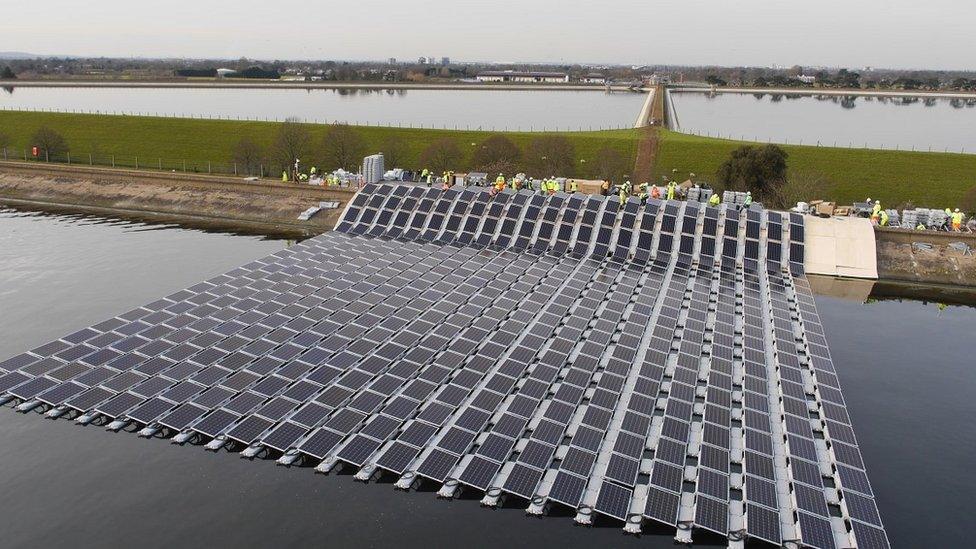
The UK's biggest floating solar installation takes up the same land area as eight Wembley football pitches
The Netherlands has even taken the idea of floating solar a step further - this one step further, with water-based arrays that follow the Sun.
It's floating island of panels have Sun-tracking technology - all in an effort to maximise the amount of clean electricity it can produce.
Other countries also have plans to try it out for themselves with Dutch-Norwegian company SolarDuck, working alongside German energy company RWE to build a floating solar plant at a North Sea wind farm.
The project is due to be up and running by 2026, which if successful would make it the biggest offshore floating solar plant in the world, with the capacity to power a few hundred homes.
There has also been a suggestion that solar farms could even be sited far out at sea where they could serve as refuelling points for electric ships.
What are the difficulties with floating solar?
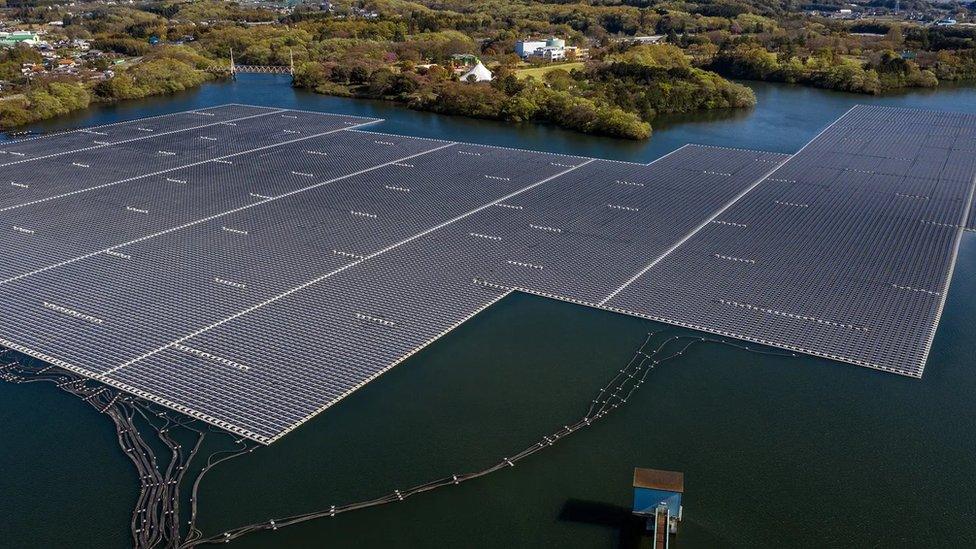
Japan is investing heavily in floating solar farms because of limited land availability or very expensive land
Floating solar is more common, and easier, in areas which have still water features, like lakes, but Indonesia and Singapore have both installed their panels on floating platforms in the sea.
This is something that has rarely been done, as waves can easily cover damage solar panels.
Research and testing is currently taking place to find ways of keeping solar panels protected and working in rough water conditions.
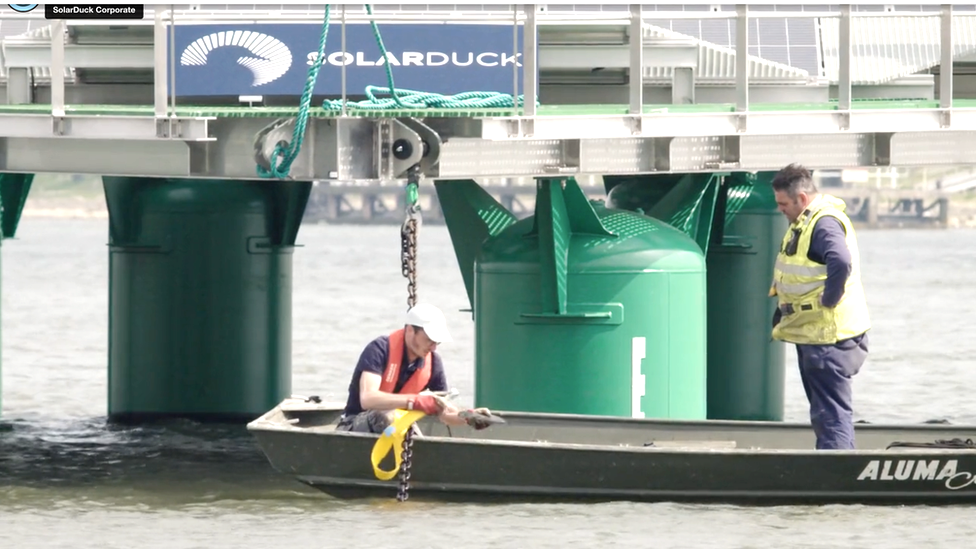
SolarDuck puts solar panels on a raised platform to protect them
One way companies are trying to reduce the risk of damage has been putting the panels on platforms raised several metres above the ocean surface - or by using a invented a floating rig, where the solar panels rest on a base which can move around as the waves pass underneath.
But neither are problem-free so experts are still looking for the perfect solution.
- Published9 March 2021
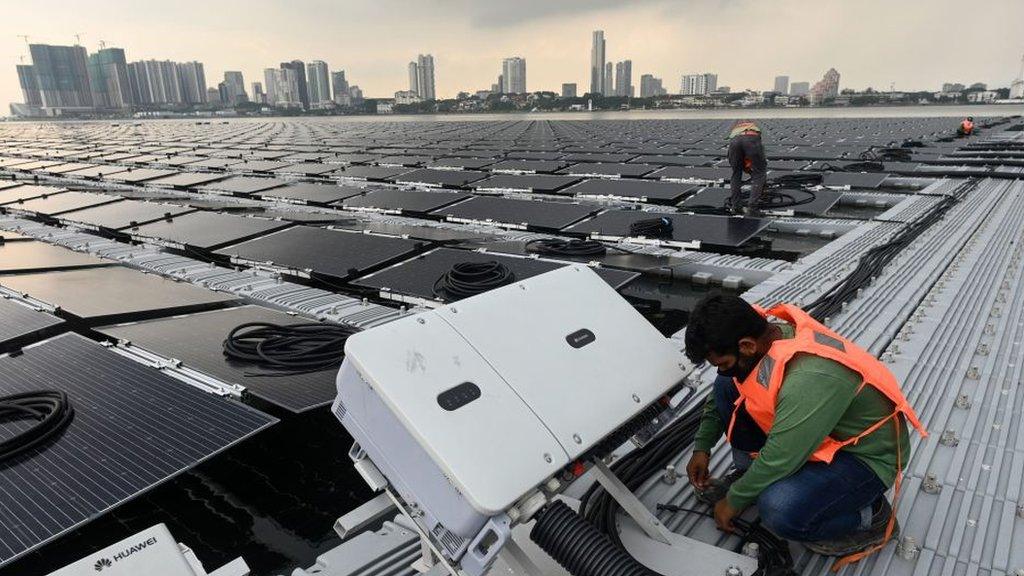
- Published23 August 2022
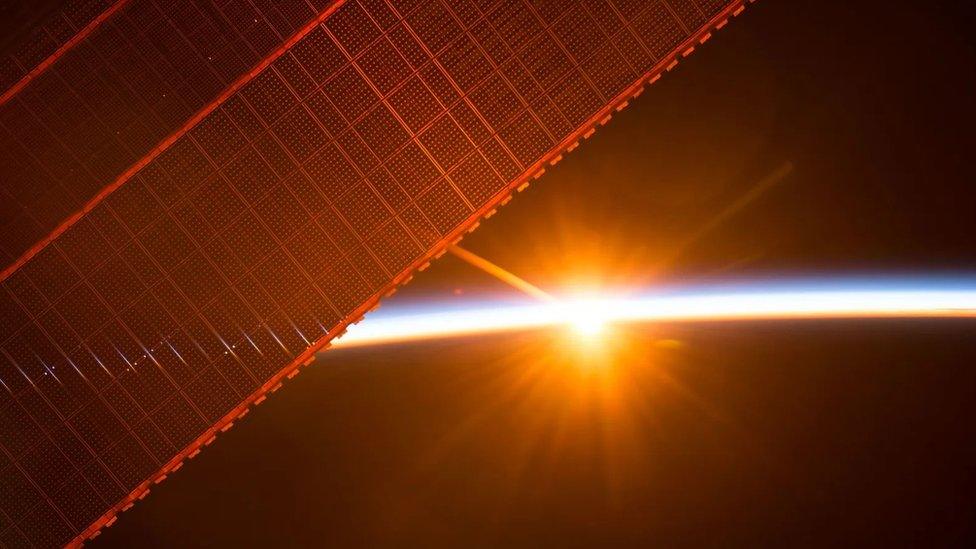
- Published27 November 2020
